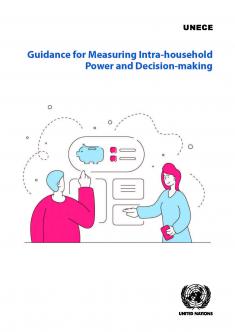
Unequal power relations operate not only in the public world but also in the private sphere, within households. This Guidance has been developed to support national statistical offices in developing ways to measure power in the private sphere, looking at who usually makes decisions about a variety of matters, from routine grocery shopping to saving up for a car, and from seeing a doctor to visiting relatives.
The Guidance proposes seven different dimensions of intra-household decision-making: Union formation, sexual and reproductive decisions; Decisions about division of labour; Health-related decisions; Decisions about social life and personal liberties; Decisions about children’s education and upbringing; Financial decisions; Perception of control and satisfaction with decision-making.
Concrete recommendations emerging from the work are made, as well as proposals for further work on this complex issue.
The Guidance is a first step towards integrating the measurement of intra-household power and decision-making into national official statistics on gender equality. Quantifying the silent inequalities behind closed doors could help to shine a spotlight on them, providing policymakers with evidence to guide their efforts towards altering the imbalances.
The Guidance consists of the following chapters:
- Conceptual background
- Current practice and experiences in measuring intra-household power and decision-making
- Indicators of intra-household power and decision-making
- Selected test analyses of existing data
- Qualitative testing of selected survey questions
- Recommendations and further work
An inventory of surveys and survey questions on intra-household power and decision-making is also included.
The Guidance was endorsed by the 68th plenary session of the Conference of European Statisticians in 2020.
Télécharger la publication en français

